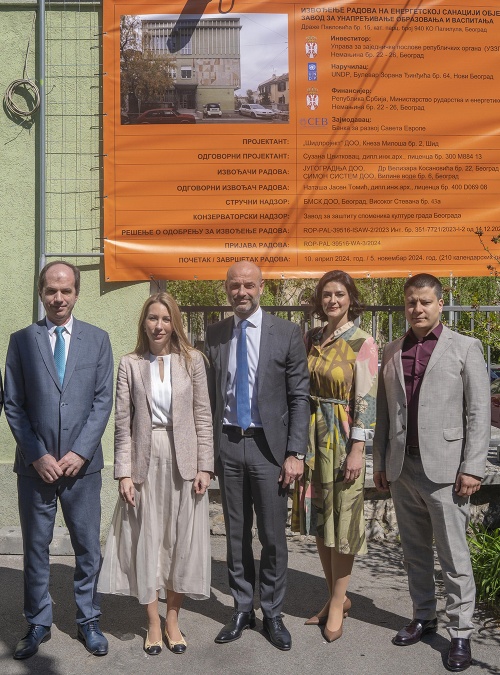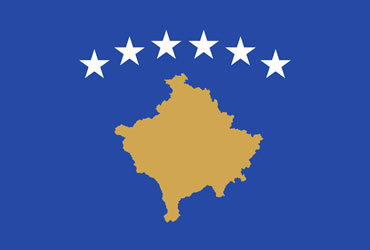
Green Renovation Wave for Public Buildings in Serbia
Works have started on 5th April to renovate the Institute for the Improvement of Education in Belgrade as part of a major project to improve the energy efficiency of public buildings in Serbia.
Serbia is among the countries with the lowest energy efficiency in Europe. The World Bank estimates that energy savings of 40% could be made in the public sector. This WBIF-supported programme worth €44 million includes the renovation of up to 28 buildings in Belgrade with a total area of 208,000 m2, half of which are listed as buildings of cultural importance. The works on the Institute include thermal insulation of walls and roofs, as well as the renovation of the façade. A centralised cooling system will also be installed, removing the air conditioners on the façades.
Plamena Halacheva, Deputy Head of the Delegation of the European Union in Serbia: “Energy-efficient buildings are an important element in combatting climate change. That is why the EU has so far provided around EUR 150 million in grants for the renovation of public buildings in Serbia, particularly on buildings in the education, health and social sectors. Climate change is real, it affects us all and Southeast Europe is no exception. Therefore, projects like these have an importance that goes beyond the renovation of buildings, they are an integral part of our action for the climate and energy transition.”
The Council of Europe Development Bank (CEB) provides a €40 million loan combined with an EU grant of €312,000.
Council of Europe Development Bank Vice-Governor, Tomaš Boček: “Together with our partners from Serbia, we managed to implement a large number of projects in the sectors of health, education, culture, social protection, as well as environmental protection. Over the past 10 years, the Development Bank has approved 19 loans totalling 1.5 billion euros. Energy efficiency measures are among the key measures that we will continue to implement.”
Yakup Beris, UNDP Resident Representative in Serbia: “Increasing the energy efficiency of public buildings is good for our health, the environment and the budget, as it reduces electricity and heating bills, as well as greenhouse gases and particulate matter emissions. The energy savings we will achieve by renovating 26 central government buildings is equivalent, for example, to the annual electricity consumption of all citizens in the municipality of Sokobanja. If all public buildings in Serbia were to be reconstructed, one thermal power plant would become redundant. Therefore, it is important to continue their energy renovation with financing from loans, public-private partnerships and public funds.”
The Minister of Mining and Energy, Dubravka Đedović Handanović, said that the entire facility of the Institute for the Improvement of Education will be completely renovated, and the works will be completed in November this year.
“More attention should be paid to public buildings and buildings under protection, as is the case with the Institute. This is the first public building at the central government level of the 26 buildings that will be renovated in the coming period. I am glad that we will enable people at the Institute to have better and more pleasant working conditions, and above all that we will make it possible for the Institute to generate significant savings, about €10,000 annually.”
The project should contribute to a minimum reduction of primary energy consumption by 30%, reduce CO2 emissions by about 20%, improve working conditions, and save around 30% in energy operating costs.
EU support to Serbia in the energy sector since 2000 amounted to more than one billion euros. The EU is currently improving the energy efficiency of several hospitals in Belgrade, including the largest hospital – Military-Medical Academy (VMA). So far, the EU has provided grants for energy efficiency measures in 200 buildings in Serbia, from kindergartens and schools to other large hospitals and public buildings.


























